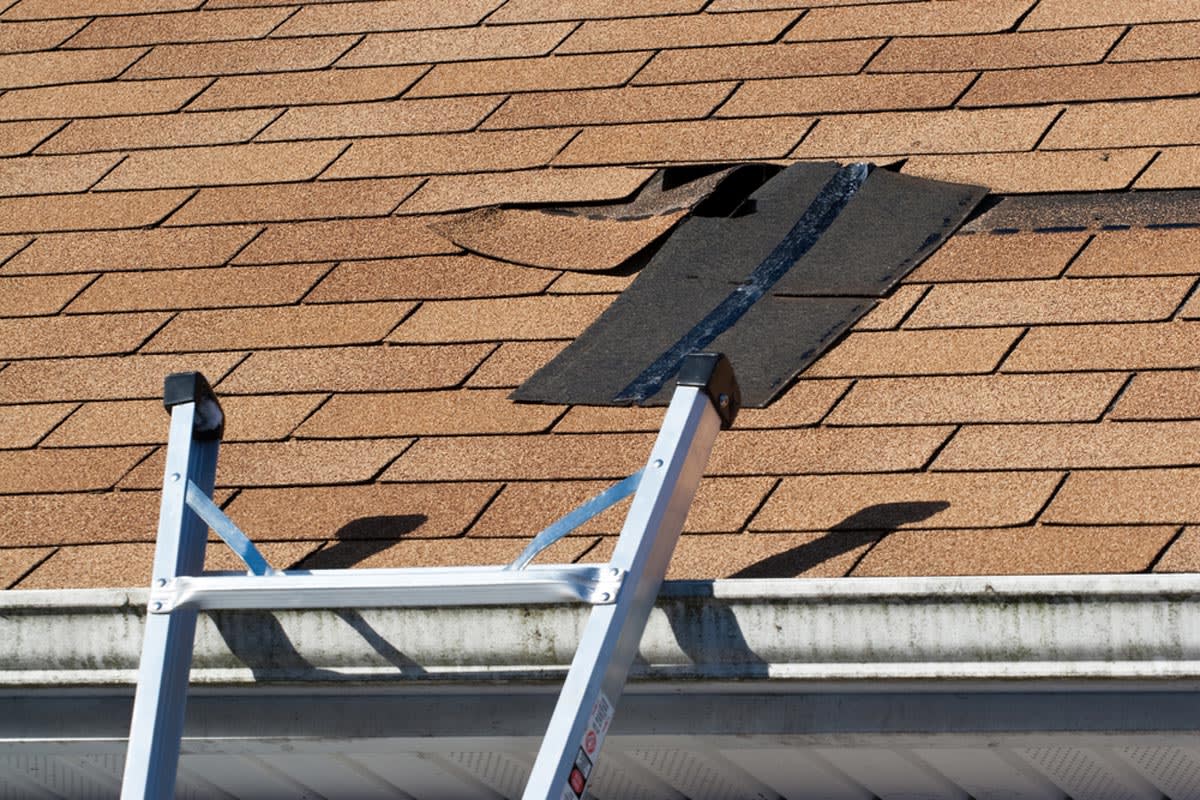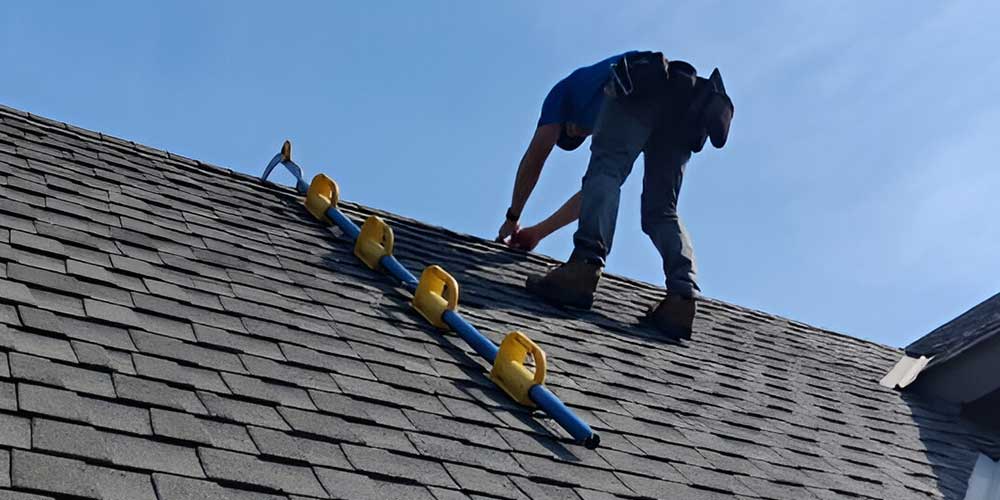Roof Repair Oahu: Quick and Affordable Roof Repairs Near You
Roof Repair Oahu: Quick and Affordable Roof Repairs Near You
Blog Article
Comprehending the Various Kinds of Roofs: A Comprehensive Guide for Homeowners
In the world of homeownership, picking the proper roof covering design is a decision that brings considerable effects for both performance and visual appeal. With a variety of options-- varying from the traditional gable to the modern flat-- each kind offers distinct benefits and challenges that must straighten with the home owner's certain requirements and ecological considerations. Understanding these differences not only aids in making an informed choice however likewise influences long-lasting maintenance and power effectiveness. As we check out the complexities of numerous roof kinds, it becomes apparent that one dimension does not fit all; the ideal selection may amaze you.
Saddleback Roof
Saddleback roofs, identified by their triangular form, are among one of the most popular roofing styles due to their simplicity and effectiveness in losing water and snow. This design features two sloping sides that fulfill at a ridge, permitting reliable drain and minimizing the danger of water accumulation. The steep pitch generally related to gable roofings improves their capacity to manage heavy precipitation, making them suitable for numerous environments.
In enhancement to their practical advantages, saddleback roofs supply aesthetic flexibility. They can be adapted to different architectural designs, from standard to contemporary homes. The layout can additionally suit added attributes such as dormer windows, which enhance all-natural light and air flow in the attic room.
Additionally, saddleback roofs give sufficient area for insulation, adding to energy performance. Home owners can choose from a variety of roof covering materials, consisting of asphalt roof shingles, metal, and ceramic tiles, even more boosting personalization choices.
Despite their advantages, saddleback roofs may require additional assistance in locations susceptible to high winds or heavy snowfall. In general, the gable roofing stays a preferred selection as a result of its blend of performance, longevity, and visual charm.
Apartment Roofs
Flat roofs are commonly recognized for their minimalist design and functional applications, particularly in industrial and industrial setups (oahu roofing). These roofings feature a virtually straight or straight surface area, which enables simple building and construction and versatile area usage. While they may do not have the visual charm of pitched roofings, flat roofing systems use many advantages, particularly in metropolitan atmospheres where taking full advantage of space is vital
One of the key benefits of level roof coverings is their accessibility. Property owners can use the roofing space for numerous functions, such as rooftop gardens, balconies, or solar panel installations. Furthermore, flat roof coverings are typically more cost-effective to mount and preserve contrasted to their sloped equivalents, as they call for fewer products and labor.
However, level roofings do existing certain challenges. Correct water drainage is important to protect against water merging, which can result in leakages and structural damages. Hence, picking high-grade waterproofing products and normal assessments are essential for making certain long life. Usual materials made use of for flat roofing systems include built-up roof covering (BUR), customized asphalt, and single-ply membranes, each offering distinctive advantages. On the whole, level roofing systems work as a versatile and useful choice for numerous property owners and companies alike.
Hip Roof Coverings
Hip roofing systems are identified by their sloped sides that merge on top, forming a ridge. This layout is distinct from saddleback roofs, as all 4 sides of a hip roof covering incline downwards towards the wall surfaces, giving an extra stable framework. The angle of the inclines can differ, permitting versatility in architectural aesthetics and functionality.
One of the key benefits of hip roofs is their capability to endure hefty winds and negative climate condition. The sloped surface areas allow much better water drainage, reducing the risk of leaks and water damage. Additionally, hip roofs provide raised attic area, which can be used for storage and even exchanged livable locations.
However, constructing a hip roofing system can be much more expensive and complicated than easier roofing types, such as gable roofs. The extra material and labor associated with developing the slopes and making sure correct architectural honesty can result in greater costs. Regardless of these drawbacks, many home owners favor hip roofing systems for their toughness, aesthetic charm, and capacity for energy efficiency.
Mansard Roofing Systems
Mansard roofing systems, commonly recognized by their distinct four-sided style, attribute two inclines on each side, with the reduced slope being steeper than the upper. This architectural design, originating from France in the 17th century, is not just aesthetically enticing however practical, as it optimizes the useful area in the top floors of a building. The steep reduced slope permits for even more clearance, making it an ideal selection for lofts or attic rooms, which can be converted right his response into living spaces.
Mansard roofs are identified by their flexibility, suiting various architectural designs, from typical to modern-day. They can be constructed with different products, including asphalt roof shingles, slate, or steel, providing house owners with a series of choices to match their preferences and budgets. Additionally, the style enables the assimilation of dormer windows, enhancing all-natural light and air flow in the top levels.
Nevertheless, it is necessary to take into consideration the potential drawbacks. Mansard roofing systems might require more maintenance due to the intricacy of their design, and their steep slopes can be challenging for snow and rainfall overflow. In general, mansard roofing systems combine beauty with functionality, making them a preferred option amongst house owners looking for distinct architectural attributes.
Dropped Roof Coverings
As homeowners significantly seek simplicity and performance in their architectural designs, shed roof coverings have become a prominent choice. Characterized by a single sloping airplane, a shed roof presents a minimal aesthetic that matches various home styles, from contemporary to rustic.
Among the key advantages of a shed roof covering is its uncomplicated building, which frequently converts to lower labor and material expenses. This style enables efficient water drain, decreasing the risk of leakages and water damage. In addition, the upright slope provides adequate room for skylights, boosting natural light within the interior.
Lost roofings additionally offer convenience in terms of usage. They can be properly integrated into additions, garages, or exterior frameworks like structures and sheds. Additionally, this roofing design can suit numerous roof materials, consisting of steel, asphalt shingles, or perhaps green roofings, lining up with environment-friendly campaigns.
However, it is important to take into consideration local climate conditions, as hefty snow lots might necessitate modifications to the roofing's angle or framework. Overall, lost roofing systems provide a functional and visually get redirected here pleasing alternative for house owners seeking to take full advantage of performance without compromising style.
Verdict


Gable roofs, defined by their triangular shape, are among the most prominent roof covering designs due to their simplicity and effectiveness in losing water and snow. oahu roofing. The steep pitch frequently linked with gable roofing systems enhances their capacity to manage hefty rainfall, making them appropriate for numerous climates
While they may do not have the aesthetic appeal of pitched roof coverings, level roofs use many advantages, especially in metropolitan settings where optimizing space is vital.

Report this page